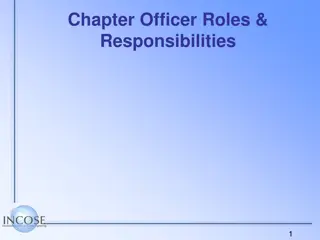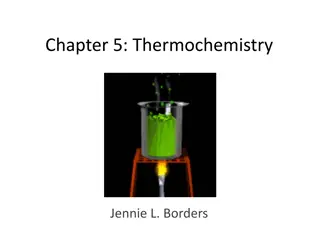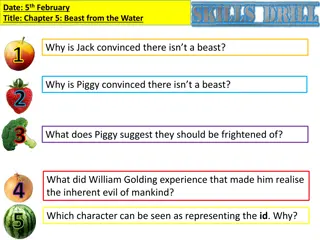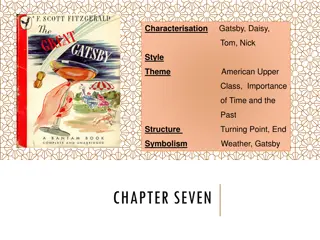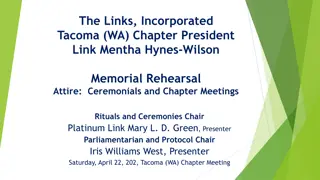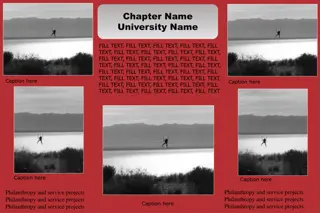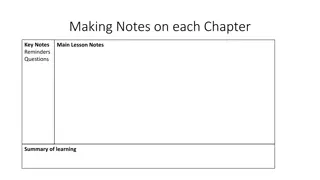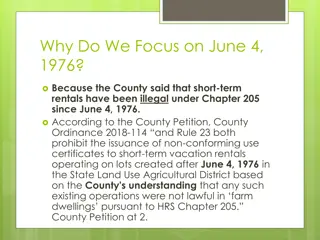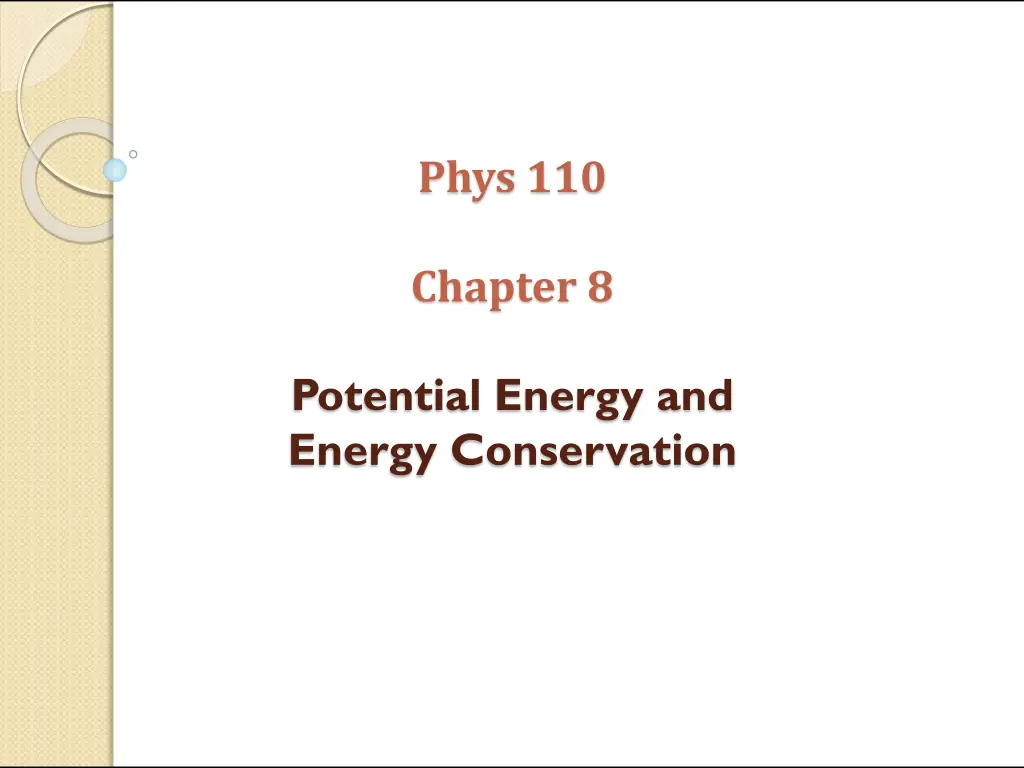
Understanding Potential Energy and Conservation of Mechanical Energy
Delve into the concept of potential energy and the principle of conservation of mechanical energy in Physics Chapter 8. Explore gravitational potential energy, conservative and nonconservative forces, and the relationship between forces and potential energy within isolated systems. Gain insights into how mechanical energy is conserved in systems with no energy transfers across boundaries.
Download Presentation

Please find below an Image/Link to download the presentation.
The content on the website is provided AS IS for your information and personal use only. It may not be sold, licensed, or shared on other websites without obtaining consent from the author. If you encounter any issues during the download, it is possible that the publisher has removed the file from their server.
You are allowed to download the files provided on this website for personal or commercial use, subject to the condition that they are used lawfully. All files are the property of their respective owners.
The content on the website is provided AS IS for your information and personal use only. It may not be sold, licensed, or shared on other websites without obtaining consent from the author.
E N D
Presentation Transcript
Phys 110 Chapter 8 Potential Energy and Energy Conservation
LECTURE OUTLINE 8.1 Potential Energy of a System 8.2 The Isolated System Conservation of Mechanical Energy 8.3 Conservative and Nonconservative Forces 8.4 Changes in Mechanical Energy for Nonconservative Forces 8.5 Relationship Between Conservative Forces and Potential Energy 2
Introduction In Chapter 7 we introduced the concepts of kinetic energy associated with the motion of members of a system and internal energy associated with the temperature of a system. In this chapter we introduce potential energy, the energy associated with the configuration of a system of objects that exert forces on each other. The potential energy concept can be used only when dealing with a special class of forces called conservative forces. When only conservative forces act within an isolated system, the kinetic energy gained (or lost) by the system as its members change their relative positions is balanced by an equal loss (or gain) in potential energy. This balancing of the two forms of energy is known as the principle of conservation of mechanical energy. 3
8.1 Potential Energy of a System Let us now derive an expression for the gravitational potential energy (Ug) associated with an object (m) at a given location (y) above the surface of the Earth: ??= ??? Mathematical description of the work done on a system that changes the gravitational potential energy of the system is give by: ? = ?? The gravitational potential energy depends only on the vertical height of the object above the surface of the Earth. The same amount of work must be done on an object Earth system whether the object is lifted vertically from the Earth or is pushed starting from the same point up a frictionless incline, ending up at the same height. 4
8.2 The Isolated System Conservation of Mechanical Energy As the book, shown in the figure, falls back to its original height, from ybto ya, the work done by the gravitational force on the book is: ? = ???? ????= ? = ?? So ? + ??= 0 Mechanical energy is defined as: ???? = ? + ?? Or, in general: ???? = ? + ? 5
8.2 The Isolated System Conservation of Mechanical Energy Let us now write the changes in energy in Equation * explicitly: ?? ?? + ?? ?? = 0 ??+ ?? ??+ ?? = 0 ??+ ??= ??+ ?? This equation is a statement of conservation of mechanical energy for an isolated system. An isolated system is one for which there are no energy transfers across the boundary. The energy in such a system is conserved the sum of the kinetic and Potential energies remains constant. This statement assumes that no nonconservative forces act within the system. 6
c). The total mechanical energy, kinetic plus potential, is conserved . ygrene laitnetop lanoitativarg hcum sa eciwt sah kcor evissam erom ehT .)a( ygrene lacinahcem esuaceB .kcor rethgil eht ot derapmoc ti htiw detaicossa eht ta evirra lliw kcor evissam erom eht ,devresnoc si metsys detalosi na fo kcor rethgil eht sa ygrene citenik hcum sa eciwt htiw dnuorg .
V1=V2=V3. The first and third balls speed up after they are thrown, while the second ball initially slows down but then speeds up after reaching its peak. The paths of all three balls are parabolas, and the balls take different times to reach the ground because they have different initial velocities. However, all three balls have the same speed at the moment they hit the ground because all start with the same kinetic energy and the ball Earth system undergoes the same change in gravitational potential energy in all three cases .
8.2 The Isolated System Conservation of Mechanical Energy Potential Energy of a Spring Potential Energy of a Spring is given by: ??=1 2??2 When the block is released from rest, the spring exerts a force on the block and returns to its original length. The stored elastic potential energy is transformed into kinetic energy of the block. The elastic potential energy stored in a spring is zero when: x = 0 Energy is stored in the spring only when the spring is either stretched or compressed. 9
8.2 The Isolated System Conservation of Mechanical Energy Example 8.2 Ball in Free Fall A ball of mass m is dropped from a height h above the ground, as shown in Figure . Neglecting air resistance, determine the speed of the ball when it is at a height y above the ground. Solution: ??+ ??= ??+ ?? 1 2??? ??= 2?( ?) 2 + ??? = 0 + ?? 10
Conservation of Mechanical Energy A block of mass m = 0.40 kg slides across a horizontal frictionless counter with a speed of v = 0.50 m/s. It runs into and compresses a spring of spring constant k = 750 N/m. When the block is momentarily stopped by the spring, by what distance d is the spring compressed? ??+ ??= ??+ ?? 1 1 1 1 1 1 + + = + + 2 2 0 0 0 0 kd mv + + = + + 2 f 2 f 2 i 2 i mv mgy kx mv mgy kx 2 2 f i 2 2 2 2 m 1 1 = 2= + + = + + 2 2 . 1 15 0 0 0 0 d v cm kd mv 2 2 k
8.3 Conservative and Nonconservative Forces Conservative Forces Conservative forces have these two equivalent properties: 1. The work done by a conservative force on a particle moving between any two points is independent of the path taken by the particle. 2. The work done by a conservative force on a particle moving through any closed path is zero. (A closed path is one in which the beginning and end points are identical.) Examples of Conservative Forces: 1.gravitational force 2.Spring force 12
8.4 Changes in Mechanical Energy for Nonconservative Forces A force is nonconservative if the work it does on an object depends on the path taken by the object between its final and starting points. The work depends upon the movement path For a non-conservative force, potential energy can NOT be defined Work done by a nonconservative force k nc d f d F W = = + otherforce W s It is generally dissipative. The dispersal of energy takes the form of heat or sound 13
8.4 Changes in Mechanical Energy for Nonconservative Forces Consider a body sliding across a surface. As the body moves through a distance d, the only force that does work on it is the force of kinetic friction. This force causes a decrease in the kinetic energy of the body: ? = ??? If there is also a change in potential energy then: ???? = ? + ?? Or in general, for any potential: ???? = ? + ? = ??? where U is the change in all forms of potential energy. 14
ygrene lacinahcem hcum sa semit ruof mrofsnart tsum ecrof noitcirf ehT .)c( sdneped ygrene citenik esuaceb ,delbuod si deeps eht fi ygrene lanretni otni eht semit ruof revo tca tsum ecrof eht ,suhT .deeps eht fo erauqs eht no ecnatsid
Block-Spring Collision A block having a mass of 0.8 kg is given an initial velocity vA = 1.2 m/s to the right and collides with a spring whose mass is negligible and whose force constant is k = 50 N/m as shown in figure. Assuming the surface to be frictionless, calculate the maximum compression of the spring after the collision. 1 2 2 1 1 1 + + = + + 2 f 2 f 2 i 2 i mv mgy kx mv mgy kx f i 2 2 ? + ? +? =? ?+ ? + ? ? ?????? ???? 8 . 0 m kg / = = = 2 . 1 ( / ) . 0 15 x v m s m max A 50 k N m
Block-Spring Collision A block having a mass of 0.8 kg is given an initial velocity vA = 1.2 m/s to the right and collides with a spring whose mass is negligible and whose force constant is k = 50 N/m as shown in figure. Suppose a constant force of kinetic friction acts between the block and the surface, with k = 0.5, what is the maximum compression xc in the spring. 1 1 1 1 + = + + + + 2 f 2 f 2 i 2 i ( ) ( ) fd otherforce W mv mgy kx mv mgy kx s f i 2 2 2 2 1 1 + = + + + ) 0 + 2 c 2 A 0 0 ( 0 ) ( 0 Nd kx mv k 2 2 = = and N mg d cx 1 1 = 2 2 kx mv mgx c A k c 2 2 = 9 . 3 + = 2 c . 0 093 xc m 25 . 0 58 0 x x c
Connected Blocks in Motion Two blocks are connected by a light string that passes over a frictionless pulley. The block of mass m1 lies on a horizontal surface and is connected to a spring of force constant k. The system is released from rest when the spring is unstretched. If the hanging block of mass m2 falls a distance h before coming to rest, calculate the coefficient of kinetic friction between the block of mass m1 and the surface. ? + ? = ?? + ?????? ????? But ??= ??= ? U = ??+ ?? ??=??? ???= ? ???? , ??=??? ???=? ???? ? ?? = ??? , for ?? : ??= ? ?? ? ? = ? ? = ?? ? 1 1kh m g kh Then, = + 2 m gh m gh 2 2 1 2 k 2 = k m g 1
8.5 Relationship Between Conservative Forces and Potential Energy The work done by a cons. force F as a particle moves along the x axis is: ?? ?? ?? = ? ??= ?? ?? ?? ? = ?? ??= ?? ?? ?? Therefore, U is negative when Fx and dx are in the same direction, as when an object is lowered in a gravitational field or when a spring pushes an object toward equilibrium. We can then define the potential energy function as: ?? ??(?) = ?? ?? + ?? ?? 19
8.5 Relationship Between Conservative Forces and Potential Energy The conservative force is related to the potential energy function through the relationship ??= ?? ?? That is, the x component of a conservative force acting on an object within a system equals the negative derivative of the potential energy of the system with respect to x. 20
Lecture Summary If a particle of mass m is at a distance y above the Earth s surface, the gravitational potential energy of the particle Earth system is ??= ??? The elastic potential energy stored in a spring of force constant k is ??=1 2??2 Total Energy of a system is: ??+ ??= ??+ ?? 21
Lecture Summary A force is conservative if the work it does on a particle moving between two points is independent of the path the particle takes between the two points, Or if the work it does on a particle is zero when the particle moves through an arbitrary closed path and returns to its initial position. A force that does not meet these criteria is said to be nonconservative. The total mechanical energy of a system is defined as the sum of the kinetic energy and the potential energy: ???? = ? + ? If a system is isolated and if no nonconservative forces are acting on objects inside the system, then the total mechanical energy of the system is constant: ??+ ??= ??+ ?? For nonconservative forces : ? + ? = ?? + ?????? ????? 22


